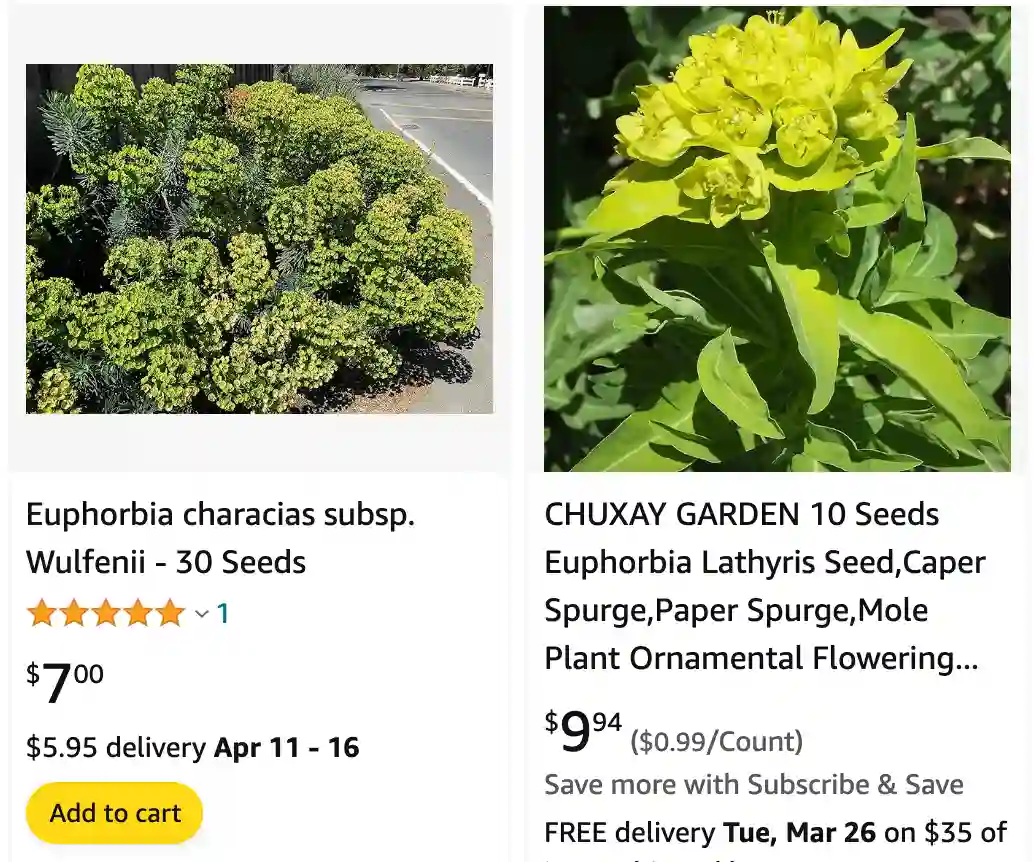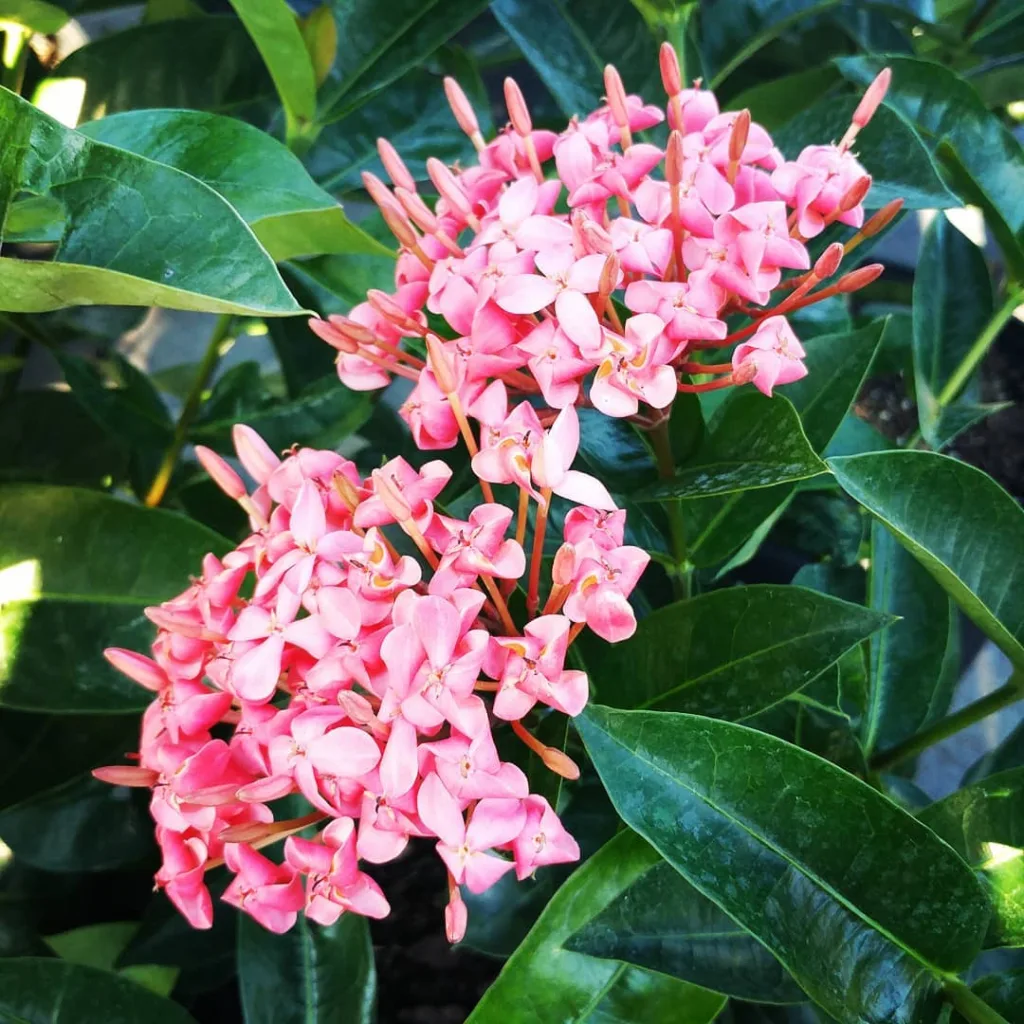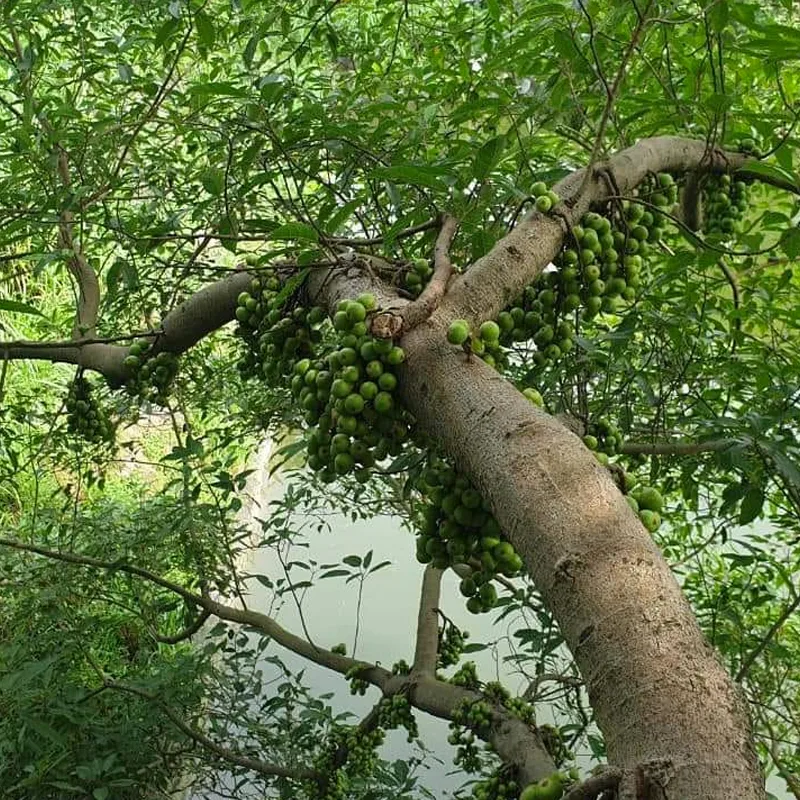
A Gardener’s Guide to Euphorbia characias
Euphorbia characias, also known as Mediterranean Spurge, is one of my favorite plants in my garden. Its dramatic structure, vivid green foliage, and unique flowering make it a standout. In this article, I’ll share my experiences and tips on how to care for, propagate, grow, and prune this fascinating plant. I’ll also address its toxicity to dogs and suggest companion plants.
2093 Species in Genus Euphorbia
How to Propagate Euphorbia characias?
Propagating Euphorbia characias can be a rewarding process. I’ve found that the best way to propagate this plant is through cuttings. Here’s my step-by-step guide:
- Take Cuttings: In late spring or early summer, select healthy, non-flowering stems. Use a sharp knife or pruning shears to take a 4-6 inch cutting just below a leaf node.
- Prepare Cuttings: Remove the lower leaves, leaving a few at the top. Let the cuttings dry for a few hours to allow the cut end to callous, which helps prevent rot.
- Rooting Medium: Fill a pot with a well-draining potting mix, such as a blend of sand and compost. Insert the cuttings into the soil.
- Watering: Water the cuttings sparingly. Overwatering can cause the cuttings to rot.
- Placement: Place the pot in a warm, bright spot but out of direct sunlight. In a few weeks, the cuttings should start to root.
How to Grow Euphorbia characias?
Growing Euphorbia characias in your garden can add a touch of architectural beauty. Here’s how I ensure my plants thrive:
- Soil: Euphorbia characias prefers well-draining soil. It can tolerate poor soil conditions but thrives best in slightly alkaline to neutral soil.
- Light: This plant loves full sun. However, it can tolerate partial shade, especially in hotter climates.
- Watering: Once established, Euphorbia characias is drought-tolerant. Water the plants regularly until they are well-established, then water sparingly.
- Fertilizing: Fertilize sparingly, if at all. Too much fertilizer can cause the plant to become leggy.
- Planting: Plant in spring or fall to give the roots time to establish before the heat of summer or the cold of winter.
How to Care for Euphorbia characias?
Caring for Euphorbia characias is relatively easy, making it a perfect choice for gardeners of all levels. Here are my care tips:
- Mulching: Apply a layer of mulch around the base of the plant to retain moisture and suppress weeds.
- Pests and Diseases: This plant is generally pest and disease-free. Occasionally, aphids can be a problem, but they can be controlled with insecticidal soap.
- Winter Care: In colder climates, protect the plant with a layer of mulch or a frost cloth.
How to Prune Euphorbia characias?
Pruning is essential to maintain the shape and health of Euphorbia characias. Here’s how I do it:
- Timing: Prune after flowering, typically in late spring or early summer.
- Method: Cut back the flowering stems to the base. This encourages new growth and prevents the plant from becoming too leggy.
- Safety: Wear gloves and long sleeves when pruning. The sap of Euphorbia characias can irritate the skin.
When to Prune Euphorbia characias?
The best time to prune Euphorbia characias is immediately after it has finished flowering. Pruning at this time allows the plant to channel its energy into new growth and next year’s blooms.
Is Euphorbia characias Poisonous to Dogs?
Yes, Euphorbia characias is poisonous to dogs. The plant’s milky sap contains toxins that can cause irritation to the mouth, gastrointestinal tract, and skin. If you have pets, it’s important to plant Euphorbia characias in areas where they can’t easily reach it. Always wash your hands after handling the plant, and if your dog ingests any part of it, contact your veterinarian immediately.
What to Plant with Euphorbia characias?
Companion planting can enhance the beauty and health of your garden. Here are some plants that pair well with Euphorbia characias:
- Lavender: The purple blooms and silvery foliage of lavender contrast beautifully with the green and yellow of Euphorbia characias.
- Sedum: Both sedum and Euphorbia characias are drought-tolerant, making them great companions.
- Thyme: Low-growing thyme adds texture and can act as a ground cover to suppress weeds.
- Santolina: The grey-green foliage of santolina complements the bold structure of Euphorbia characias.
Conclusion
Euphorbia characias is a striking and resilient addition to any garden. By following these tips on propagation, growth, care, and pruning, you can enjoy its unique beauty year after year. Always be cautious of its toxicity to pets and consider pairing it with complementary plants to create a stunning garden display. Happy gardening!
If i die, water my plants!



